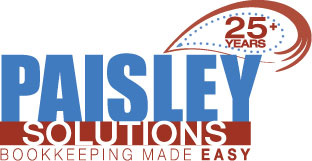Why Business Owners Should Pay Attention to Cash Flow
Many documents help business owners understand their financial footing—from the income statement to the balance sheet—providing both a retrospective look at spending and income and projections of future standing. Businesses that want to get an up-to-date look at their finances need to also pay attention to the cash flow statement. If you know how to read a cash flow statement, you can appreciate how much money the company has on hand, as well as where to reassess spending to protect the business’ financial future.
What is a Cash Flow Statement?
Business owners spend considerable time analyzing past spending and calculating future balances, looking for opportunities to cut costs and pursue new revenue opportunities. However, you also need to have a good understanding of your present financial situation to make smart decisions about the future.
What Does a Cash Flow Statement Tell You?
That’s where a cash flow statement can be influential. The document gives business owners a realistic look at finances: how much cash is on hand and whether it’s enough to cover upcoming expenditures. The statement enables business owners to make key business decisions; for instance, companies that record prolonged periods of positive cash flow can choose to invest some to generate even more income, while those that are experiencing a deficit can start planning for ways to reduce expenses, such as reassessing pricing and overhead costs to generate more cash in the short-term. The cash flow statement can also be a tool to help secure additional credit or investors. Working with a professional bookkeeper to manage up-to-date and meaningful financial reports will benefit your organization so you can focus on effective planning and projections.
How to Read a Cash Flow Statement
When business owners are considering the best way for how to read a cash flow statement, there are several areas to pay attention to, including:
- Readout of net income
- Cash flow from operations, investing, and financing
- Cash outflow for everything from salary to utilities to loans
Unlike a balance sheet or income statement, the cash flow statement shows the reality of the cash input and output—what has been paid and collected, as opposed to what is projected. Because of that, the literal bottom line is the most telling: It will summarize whether the business has a positive or negative cash flow, compared to the last statement. That gives business owners an indication of whether they have enough cash on hand to cover costs—a key driver of smart business strategizing.
Based in Kennett Square, Paisley Solutions offers the guidance that business owners need when it comes to understanding their cash flow statements and other financial reporting. We provide outsourced and virtual bookkeeping services to small to mid-size businesses and nonprofits throughout Southeastern Pennsylvania and beyond. Contact our professional bookkeeping firm to get started today with a free consultation and needs analysis.
